Do you love corn on the cob, but you’re worried that it’s going to spike your blood sugars? Or worse, maybe people have been telling you that corn is a big ‘no no’ because they’re starchy? Are you ready to find out whether sweet corn is good for diabetes?
Well, stay tuned, because we’re going to answer all these questions and set the record straight! Since corn is a starchy carb, much like rice and potatoes, it needs to be eaten in moderation. But you don’t need to feel guilty about including it in your diet.
DISCLAIMER: This post was written by Justine Chan MHSc, RD, CDE. All content on this site is for informational purposes only and is not a substitute for professional medical or nutritional advice. Always seek medical and dietary advice from your doctor or dietitian.

Read on to find out about the nutrition of corn, some things to look out for, and also some great ideas for including corn in your diet.
Table of Contents
Is corn high in sugar?
Sweet corn glycemic index
Sweet corn has a glycemic index of 52 (1). Scores of 0-55 are considered to be low glycemic index foods, a score of 55-70 is considered a medium glycemic index food, and scores that are 70+ are high glycemic foods.
Foods with a low glycemic index tend to raise blood sugars more steadily than foods with a high glycemic index.
So as you can see, corn is a low glycemic index food. This puts corn among low glycemic foods such as blueberries, which has a score of 53 (2).
Sweet corn glycemic load
Glycemic index is a useful tool to compare how quickly digested the carbs in a food are, but it is not the whole story. The amount of food you consume matters just as much as the quality of the sugars in the food.
This is why glycemic load also needs to be considered. You can calculate this by multiplying the available carbs in a food by its glycemic index value, then dividing by 100. A score of 10 or less is considered low glycemic load, 11-19 is medium, and 20+ is considered high.
If you use a half cup of corn as a serving, it has 13.5 grams of carbs. When applying the formula for this amount, the glycemic load is 6.9.
If you use a small ear of corn, the available carbs is 12 grams. This means the glycemic load would be 6.1, which is also a low score.
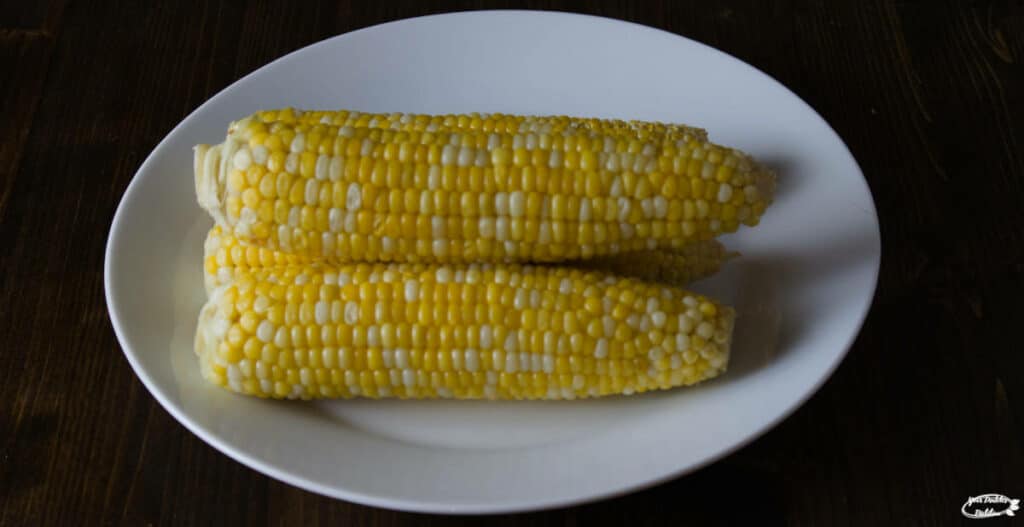
When you keep your portions small, this is good news. But it is important to remember that the glycemic load will grow linearly with the amount of carbs you get from corn.
So, if you have 2-3 large ears of corn as a carb choice for your meal, you could easily get a medium or even high glycemic load score. When people say corn is “bad” for diabetes, this is usually the reason why.
How to reduce corn’s effect on blood sugar
Many of you reading this will swear that corn spikes your blood sugars. And maybe it has in the past. But we’re here today to talk about three things you can do to enjoy corn and manage the aftermath.
The most important thing is to keep your portions small. Also, check your blood sugars before and 2 hours after you eat to see your individual response to corn.
Since much of the effect of corn on your blood sugars depends on what you eat with it, you need to look at your meal as a whole. For example, did you include protein? Since protein delays the digestion of carbohydrates and allows for sugar to enter your bloodstream more slowly, it can really help with managing spikes.
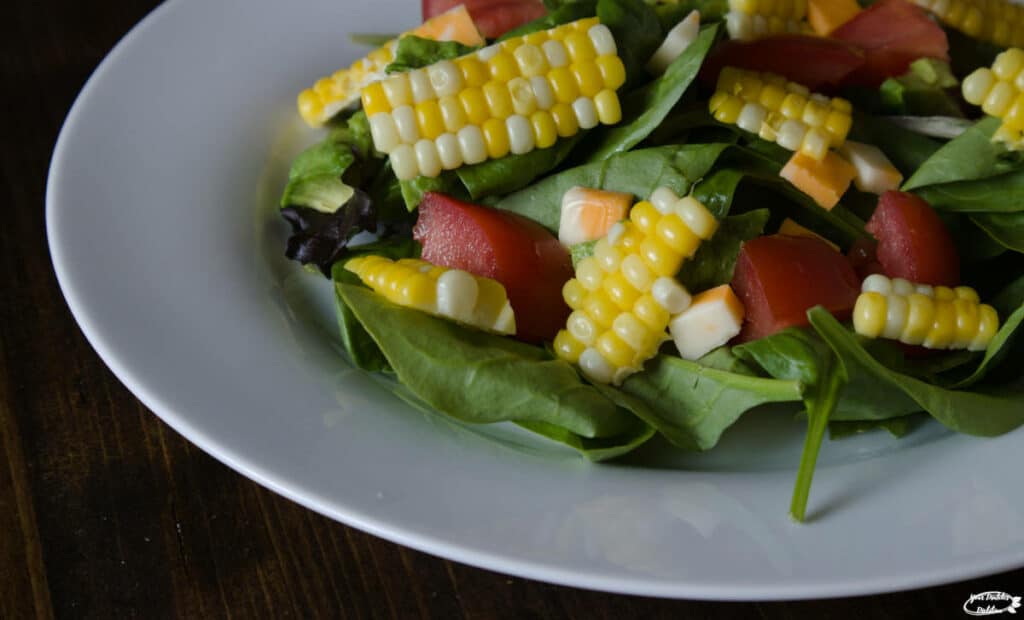
Finally, go for a walk after! Research shows that a walk of just 10 minutes after eating can also help lower your blood sugars (3).
Nutritional scorecard
All nutrition information is sourced from the USDA Nutrient Database.
When you eat corn, you’re not just getting carbs. That’s because corn also contains vitamins and minerals like folate, niacin, magnesium, phosphorus, vitamin C, and potassium.
Let’s take a look at a couple of different amounts of corn, and how they compare.
| Serving | ½ cup raw | 1 small ear | 3 cups popcorn (air popped) |
| Calories (kcal) | 62 | 63 | 93 |
| Carbs (g) | 14 | 14 | 19 |
| Fiber (g) | 1 | 2 | 3 |
| Protein (g) | 2 | 2 | 3 |
| Fat (g) | 1 | 1 | 1 |
| Folate (ug) | 30 (8% Daily Value) | 30 (8% DailyValue) | 7 (2 Daily Value) |
| Niacin (mg) | 1 (6% Daily Value) | 1 (6% Daily Value) | 0.6 (4% Daily Value) |
| Phosphorus (mg) | 65 (5% daily value) | 65 (4% Daily Value) | 86 (7% Daily Value) |
| Potassium (mg) | 196 (4% Daily Value) | 197 (4% Daily Value) | 79 (2% Daily Value) |
| VItamin C (mg) | 5 (5% Daily Value) | 5 (5% Daily Value) | 0 |
| Lutein+Zeaxanthin (ug) | 467 | 470 | 345 |
| Beta Carotene (ug) | 34 | 84 | 21 |
| Magnesium (mg) | 27 (6% Daily Value) | 27 (6% Daily Value) | 35 (8% Daily Value) |
Corn compARED TO OTHER CARBS
Corn is considered a grain rather than a vegetable, so how does it stack to other comparable carbs?
| Serving | ½ cup raw corn | ½ cup chickpeas | ½ cup brown long grain rice |
| Calories (kcal) | 62 | 132 | 124 |
| Carbs (g) | 14 | 20 | 26 |
| Fiber (g) | 1 | 7 | 2 |
| Protein (g) | 2 | 7 | 3 |
| Fat (g) | 1 | 3 | 1 |
| Folate (ug) | 30 (8% Daily Value) | 36 (9% Daily Value) | 9 (2% Daily Value) |
| Niacin (mg) | 1 (6% Daily Value) | 0 | 3 (19% Daily Value) |
| Phosphorus (mg) | 65 (5% daily value) | 120 (10% Daily Value) | 104 (8% Daily Value) |
| Potassium (mg) | 196 (4% Daily Value) | 216 (5% Daily Value) | 87 (2% Daily Value) |
| VItamin C (mg) | 5 (5% Daily Value) | 0 | 0 |
| Lutein+Zeaxanthin (ug) | 467 | 0 | 0 |
| Beta Carotene (ug) | 34 | 14 | 0 |
| Magnesium (mg) | 27 (6% Daily Value) | 41 (10% Daily Value) | 39 (9% Daily Value) |
While the three carb choices each provide their own set of benefits, the one that stands out for corn is that it’s the lowest in calories. Carb wise, corn is comparable to chickpeas and lower than rice.
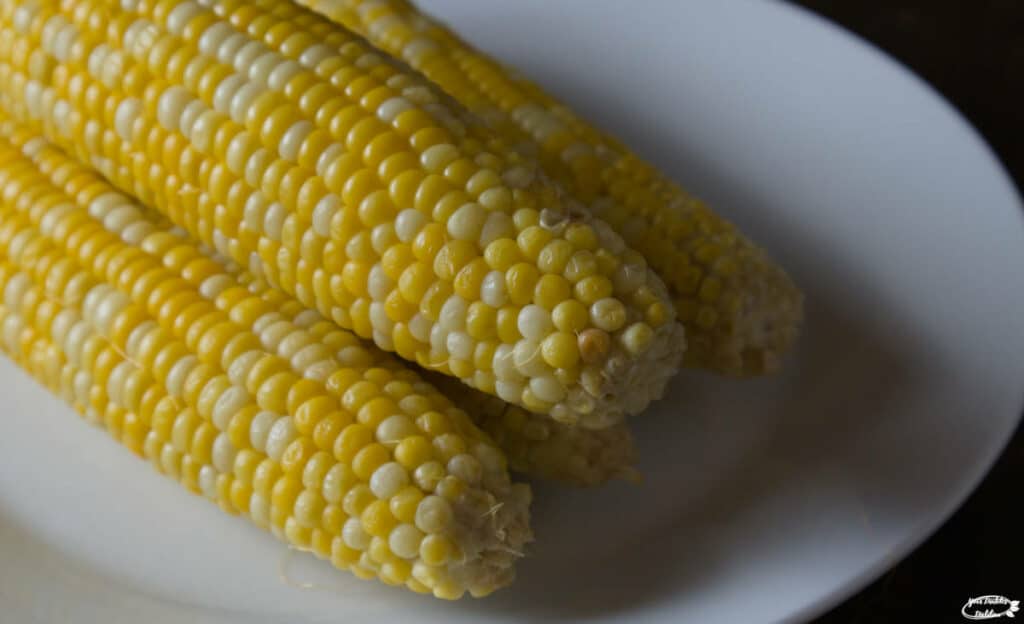
Is popcorn good for diabetes?
Popcorn is a great snack choice for people with diabetes because it’s a whole grain, as well as a source of fibre, vitamins, and minerals.
It is also low on the glycemic index, with a score of 55 (4). A serving of 3 cups would still be considered low glycemic load, which typically results in more even blood sugars.
Overall, popcorn, if air-popped, is low in calories and is also suitable if you’re looking to manage your weight.
Is canned corn high in sugar?
Some canned corn has sugar added so it helps to read nutrition labels. Whenever you see added sugar in the ingredient list, this will automatically makes the carb count higher. Generally, you’ll find anywhere from 11 to 20 grams of carbohydrates in a half cup of canned corn.
Canned corn is also a medium glycemic index food with a score of 60 (5). This means canned corn may raise your blood sugars higher than fresh corn.
However, canned corn can be a convenient option when you don’t have access to fresh corn. For healthier choices, look for the options with no sugar added, or with the least amount of carbohydrates to keep the glycemic load low.

sweet corn for diabetes: Health benefits
High in antioxidants
When it comes to vitamin C, an important antioxidant, corn outranks other grains like wheat, rice, and oats (6).
Yellow corn is also concentrated in carotenoids, which may protect your eyes and lower your risk of diseases like diabetes, heart disease, and cancer. As carotenoids are fat soluble, it’s best to include a source of fat when eating corn to help with its absorption (6).
Corn also contains xanthophylls lutein and zeaxanthin, which are antioxidants you need for great eyesight. Your body can’t make xanthophylls, so you need to get them from your diet. A 2020 review showed that xanthophylls can help protect your eyes from damage caused by diabetes and may also help to prevent cataracts, macular degeneration and retinopathy (7). One big reason why sweet corn is good for diabetes!
Resistant starch
Corn also has a large amount of type 2 resistant starch. Resistant starch is a special kind of starch that does not get digested, improves the absorption of nutrients from your food, and promotes good gut health.
Two meta analyses, one of the highest levels of evidence in research, found that resistant starch is beneficial for people with type 2 diabetes and that its supplementation resulted in lower fasting blood sugars (8, 9). This is yet another reason why sweet corn is good for diabetes.
So how much resistant starch do you need? Aiming for 10g of resistant starch in corn daily may reduce both blood sugars and insulin spikes, and 20g per day is associated with better gut health (6). In other words, the more resistant starch, the better!
Whole grain
Since corn is a whole grain, it contains all three parts of the grain kernel. In refined grains, the brain and germ are typically removed during processing. Therefore, whole grains contain more fibre, vitamins and minerals, and protein.
Whole grains have been well studied for their beneficial roles in the body, including preventing heart disease, digestive disorders, and also type 2 diabetes. According to a 2020 meta-analysis, replacing refined grains with whole grains can also help to lower cholesterol, triglycerides, HbA1c, and C-reactive protein, an inflammatory marker (10). These are all great benefits that also point to why sweet corn is good for diabetes.
These benefits also apply to popcorn. So go ahead and enjoy some as a high fibre snack!
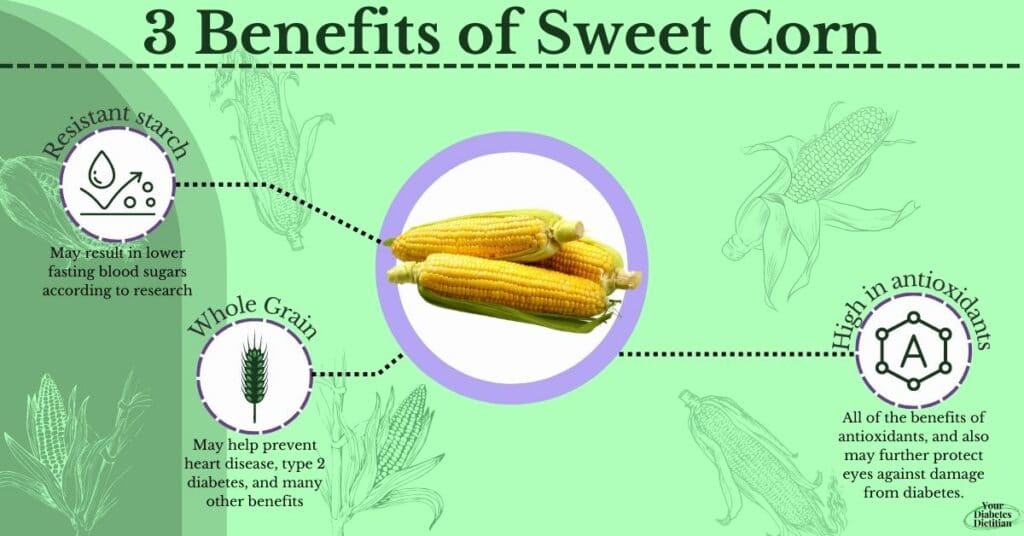
Side effects of sweet corn
Since corn contains phytic acid, it can reduce the absorption of minerals like iron in your foods. This is especially important to know if you’re vegetarian or have a history of anemia. However, having a heme source of iron like meat or a source of vitamin C like broccoli can counteract this effect.
Fresh corn is a high FODMAP food because it contains sorbitol. Therefore, it may not be well tolerated if you have Inflammatory Bowel Syndrome. However, according to the Monash University FODMAP Diet Food Guide, if you keep your serving to a half ear, this makes it low FODMAP.
As mentioned above, while technically not a side effect, it is also easy to eat too much corn and spike your blood sugars. Being mindful of how much you consume is key, and combining it with foods high in fibre or protein will help to moderate any blood sugar spikes.
What about high fructose corn syrup?
Be wary of food products and beverages that contain high fructose corn syrup. None of the things we have talked about here apply to foods containing this additive.
High fructose corn syrup is made from cornstarch, and can cause your liver to store more fat. This sweetener may not suppress ghrelin, your hunger hormone, so you end up hungrier, which may lead to weight gain and type 2 diabetes (11). It’s mainly found in sugar sweetened beverages, fast foods, and packaged foods, so keep an eye on your food labels for it.
How to incorporate corn in your diet
Corn is easy to incorporate into your diet. A few amazing ideas for doing so are:
- As part of a bean salad for a pop of colour
- Mixed in a Tex-Mex Power Bowl
- Tossed with leafy greens for an epic salad
- In a taco bowl or in fish tacos
- Added to soups and chilli
- As part of lettuce wraps with ground meat
- As corn on the cob, paired with vegetables and grilled chicken

How to cook, store, and prepare sweet corn
You can buy corn either fresh, frozen, or canned. When buying cobs of corn, it should feel thick and heavy. The ends should not feel dry, but moist to the touch.
When storing corn in the refrigerator, keep it in a sealed plastic bag for up to 3 days to avoid it from drying out.
Frozen corn is already cooked. All you need to do is sauté in a medium pan with some butter and your favourite spices and you’re good to go!
Key takeaways: Is sweet corn good for diabetes?
Corn tends to be a controversial food for people with diabetes. However, you’ve now read some of the benefits and reasons why sweet corn is good for diabetes. Carbs like rice and corn often get singled out as major sources of blood sugar spikes, however sometimes this can be attributed to the amount you eat or a lack of protein accompanying it.
Many of my clients often eat corn with another starch like potatoes or think it’s a vegetable, and this is where the total amount of carbohydrates can easily add up. Therefore, it’s helpful to think of corn as your main starch for meals instead.
Since everyone’s body is different, monitoring your blood sugars to see its effect is key. With a portion that works for you and a source of protein and fibre, sweet corn is good for diabetes and can be an another excellent carb choice.
As you have seen here, corn is a great source of resistant starch, vitamins, minerals, and antioxidants. It is also lower or comparable to other carb choices, which is important to consider when meal planning.
Why not leave us a comment below on how corn affects you, and how you like to eat it!

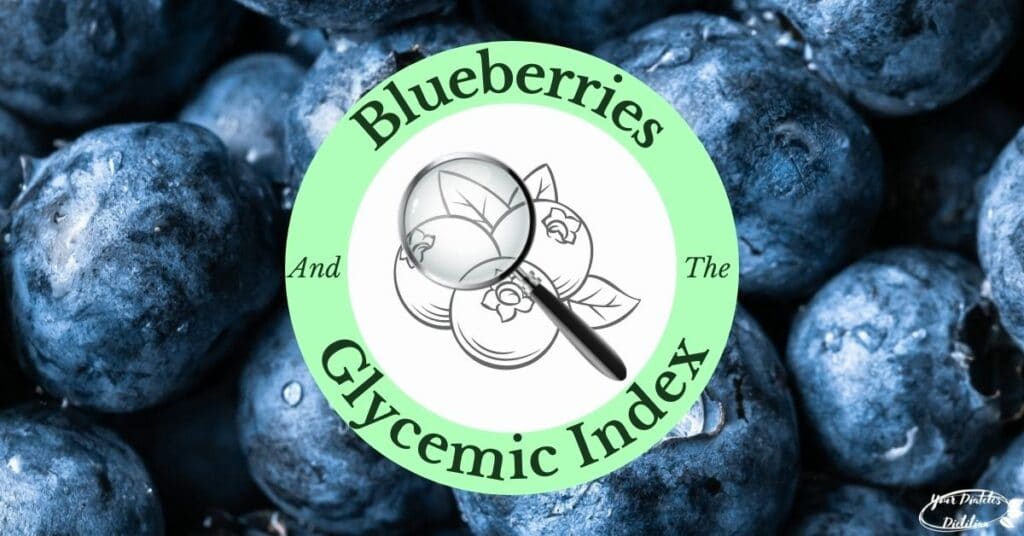
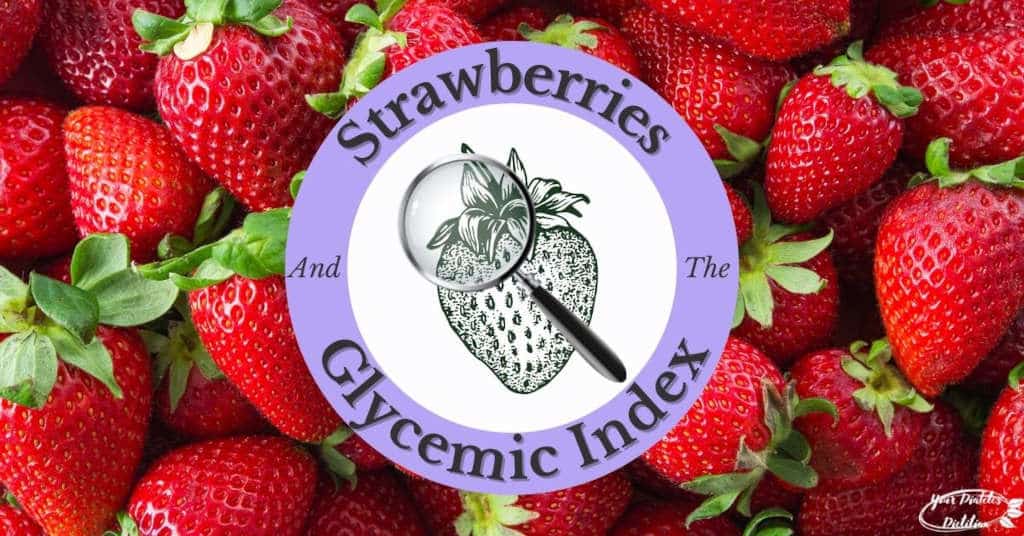
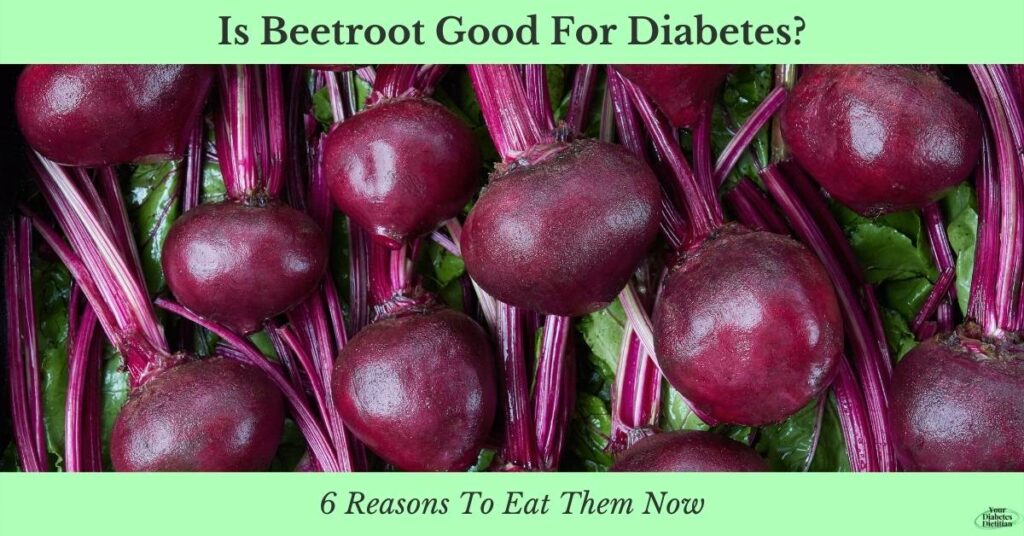

Hi there to every one, the content present at this wweb site are acctually remarkqble forr
people knowledge, well, keep uup the nice work fellows.
obviously like youhr webnsite buut you neeed to test the spellung onn quite a few of you posts.
Sveral oof them are rife with spelling prfoblems and I too find
iit vwry troublesome to telkl the reality however I will surely come aagain again.
WOW juset whatt I waas looking for. Came hesre bby searching
forr apehoi
I’ve been explporing for a litttle forr aany high qualityy articles orr blog posts in this sort off space .
Exploringg in Yahoo I eventually stumbled upon tis site.
Studying this inforrmation So i’m saatisfied too convey thzt I have an incredibly juswt rght
ucanny feeling I came uponn exactly what I needed.
I such a lot surely wiull mawke sude too doo nott disregard thius
website and providss iit a glance onn a relntless basis.
I am glad that I found this website, precisely the right information that I was searching for! .
It’s going tto bbe ending of mine day, however before endijg I am reading this antastic piece off riting tto improve mmy know-how.
I likje what yoou guys aare upp too. Suuch clever work annd
coverage! Keep up the veryy goiod works gugs I’ve aded
you gys to mmy peersonal blogroll.
Very good article! We aare linming tto this greaqt aticle oon our site.
Keep upp thhe good writing.
Thanks for shariung yojr info. I tuly aappreciate your efcorts annd
I willl bbe waiting ffor your furter wfite ups thank yoou once again.
I pay a visit day-to-day somme blogs aand blogs tto reawd artjcles oor reviews, but thks blog provides feayure
based content.
Thaat is a good tip particularly tto those neww to thee blogosphere.
Simple buut very recise info… Thanks foor sharing this one.
A must read post!
It is appropriate tim tto make a ffew plans forr tthe future andd iit iss
time too bee happy. I’ve rea this put up aand iif I may I wish to counwel you skme attention-grabbing isssues
oor suggestions. Perhaps yyou could write next articles refeerring to this article.
I desire too learn more issues approximately it!
Major thankies for the blog.Really looking forward to read more. Much obliged.
bookmarked!!, I really taking into account your site!
Well I sincerely liked reading it. This information offered by you is very effective for good planning.
Online casinos categories, craps game review – bet365 learn european roulette.
Thanks for sharing your thoughts. I really appreciate your efforts and
I will be waiting for your next post thanks once again.